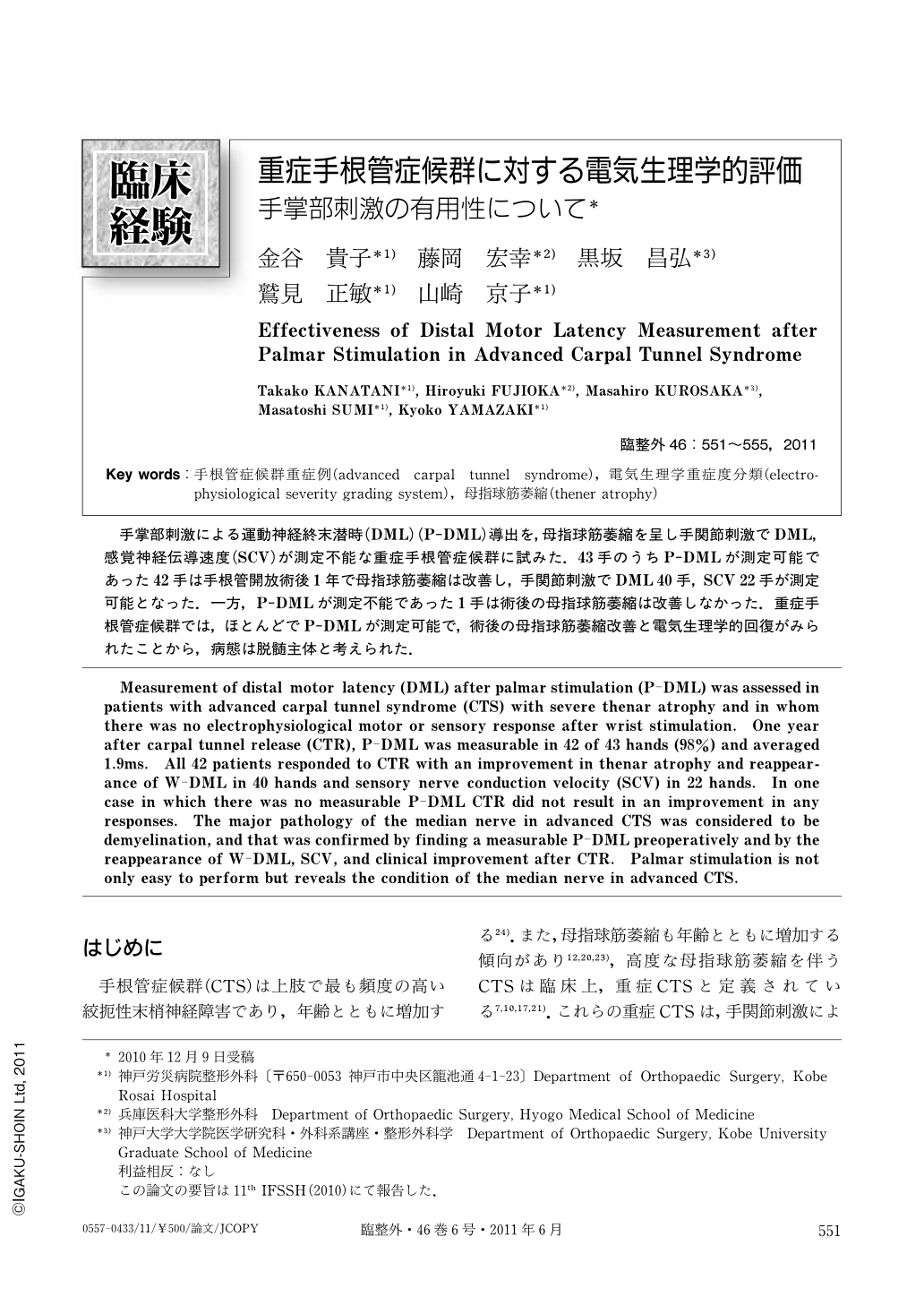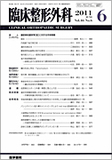Japanese
English
- 有料閲覧
- Abstract 文献概要
- 1ページ目 Look Inside
- 参考文献 Reference
手掌部刺激による運動神経終末潜時(DML)(P-DML)導出を,母指球筋萎縮を呈し手関節刺激でDML,感覚神経伝導速度(SCV)が測定不能な重症手根管症候群に試みた.43手のうちP-DMLが測定可能であった42手は手根管開放術後1年で母指球筋萎縮は改善し,手関節刺激でDML40手,SCV22手が測定可能となった.一方,P-DMLが測定不能であった1手は術後の母指球筋萎縮は改善しなかった.重症手根管症候群では,ほとんどでP-DMLが測定可能で,術後の母指球筋萎縮改善と電気生理学的回復がみられたことから,病態は脱髄主体と考えられた.
Measurement of distal motor latency (DML) after palmar stimulation (P-DML) was assessed in patients with advanced carpal tunnel syndrome (CTS) with severe thenar atrophy and in whom there was no electrophysiological motor or sensory response after wrist stimulation. One year after carpal tunnel release (CTR), P-DML was measurable in 42 of 43 hands (98%) and averaged 1.9ms. All 42 patients responded to CTR with an improvement in thenar atrophy and reappearance of W-DML in 40 hands and sensory nerve conduction velocity (SCV) in 22 hands. In one case in which there was no measurable P-DML CTR did not result in an improvement in any responses. The major pathology of the median nerve in advanced CTS was considered to be demyelination, and that was confirmed by finding a measurable P-DML preoperatively and by the reappearance of W-DML, SCV, and clinical improvement after CTR. Palmar stimulation is not only easy to perform but reveals the condition of the median nerve in advanced CTS.

Copyright © 2011, Igaku-Shoin Ltd. All rights reserved.


